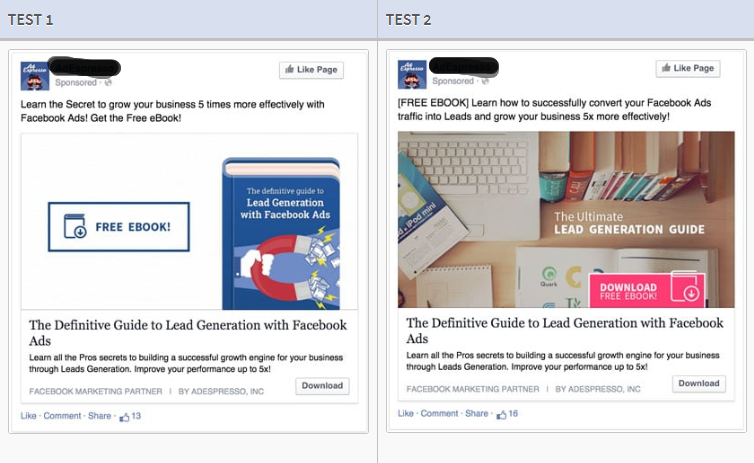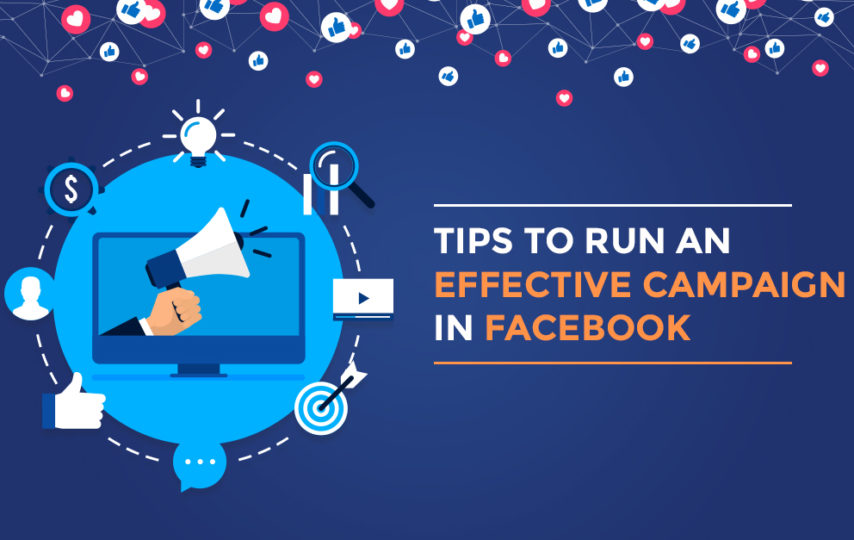The success of Facebook advertising lies in running them at low cost and tracking data. Use the data to split test and get optimum conversions at a minimal investment. Every successful business maximizes the impact of their Facebook ad campaign using split testing. Split testing involves showing two similar, yet slightly different versions of a landing page or Facebook ad to the audience and using the data to track the version that performs better.
You can split test your Facebook ads marketing to find the perfect ad for the perfect audience. The key to this is to track data for the ads and innovate continuously to find which version works best. You can experiment with headlines, images, value proposition, body text, and audience that you choose to show your ads to.
Here are top tips for running an effective Facebook ad campaign
Test the image
To begin testing the image on your ad, create three ad sets, five audiences and one ad per ad set. Test each ad with each audience at a minimal cost and use the data to make adjustments. Select one image that you think will suit your ad campaign the best – which conveys the message, goes with the color scheme and will resonate with the target audience, and use this image for all your ads. This will help you understand the audience with which it works best, and you will save cost in terms of the designer until you know you it will be profitable. When you see an ad performing well, you can tweak the image to see if it is improving the response.

Image testing for Facebook ads is a case of trial and error. The image with the best conversion rate is the one that resonates the most with your audience. You can also test the color of your ad. The research shows a 100% conversion rate can be achieved by adding a colored border to your Facebook Ad. The color blue is associated with calmness and serenity. Red demands attention, but can also appear as aggressive. Green is balanced. Use the color scheme that is appropriate for your niche and which also stands out, so it works in your favor among your competitor ads. It is also important to note that the color scheme in your Facebook ad has to be similar to the one on your landing page.
Test images pertaining to specific locations and events for increased conversion rates. Images of colorful logos, headshots, and happy women have been proven conversion images. If you plan to include a headshot, select the one that directly looks at the camera to promote audience engagement.
Test the Headline
You can test the headline of your Facebook ad copy with the superlative positive headline, negative superlative headline and a headline without superlatives. Research shows that headlines with negative superlatives performed 30% better. This is because humans are neurologically wired to respond to negative news. This is the main reason why the mainstream media sets their tone to negative news to gain attention.
You can test ad from different angles to find which tone works best for your target audience to reach your brand’s message. Determine the dominant emotional driver in your niche so you can adjust your future Facebook ad campaigns. You can test several other factors in your headlines, such as promises of a how-to solution, statistics, questions, and audience references.
Test the Body Text
It is essential to get the body of the text right as this is the determining factor for your audience to click on your ad and reach the landing page. You can include a testimonial of your clients and test if it results in better conversions. To make it catchy, use a single proof statement with a precise statistic. This encourages people to click on the CTA button.
You can also test the CTA button using Learn More, Sign Up or Buy Now to know which results in most conversions. Most of the times when the body text of an ad copy is not converting, the reason is the text talks about the product features and not user benefits. People purchased based on their emotions and rationalize with logic. To convey the message as to how your product will enhance your target audience’s life rather than talking about technical specifications. You can also try to incorporate some humor into the ad text if it will capture people’s attention and yet deliver the message across.
Test the Landing Page
Your target audience should not feel that your landing page is not in tune with your Facebook ad either in style or tone. This is a major conversion killer. So make sure the branding of your landing page is the same as your Facebook ad. To make sure your customers move smoothly through your marketing funnel, get rid of any distractions on your landing page. The goal of the landing page is to generate conversions so design it to serve the purpose.
You can test one variable at a time to know the change that facilitated the conversion. Even the smallest change can show a significant increase in conversions. The resultant data of your ad campaign should drive your decision making. To test a landing page effectively, use an analytics tool like Crazy Egg, which will help you understand the elements of your landing page that work and that don’t. You also get to know where your prospects are abandoning your page right before completing the purchase.
Apart from using tools, look at the performance of your landing page holistically. The tool gives you insight as to where you can work, what sort of changes you can make to your ad copy but when you assess the landing page split test results you have to see how many people convert. Only when people purchase the product/service that you market using your Facebook ad, it fulfills the purpose of running the ad campaign.
Test the Audience
Have a clear customer profile for your product before you run your Facebook ad campaign. If you need audience insight before framing your customer profile, surveying your existing customers is the best way. You can include questions on education, income level, marital status, values, interests and pain points.
You can also segment demographic and age groups to narrow down and reach your target audience specifically for increased conversions. Try to build a lookalike audience based on your buyer’s common attributes and you can also use the Facebook pixel to track conversion. For any product and industry, the conversion rate of a lookalike audience is higher.
Run an ad for a day or two and then make assessments for a consistent metric. Cost per conversion is one metric that most of the businesses focus on. To run a profitable Ad, your Ad’s cost per click (CPC) must be lower than the sourcing cost. In case your Facebook ad is performing slightly less than what it needs to in order to increase profit, you can tweak and split test further to see if you can improve it.
Conclusion
Generate an excellent profit once you set and optimize it to a profitable ad campaign. You can start with Facebook Feeds and dedicate a small percentage of your budget to brand building with your Facebook ads. Keep an eye on ad frequency and use the right ad objective to target custom audience. Facebook ad campaigns usually need some experimentation before they start generating good profits for any business so don’t give up too early and follow up with lead generation ad responses quickly to drive the lead into your sales funnel.








